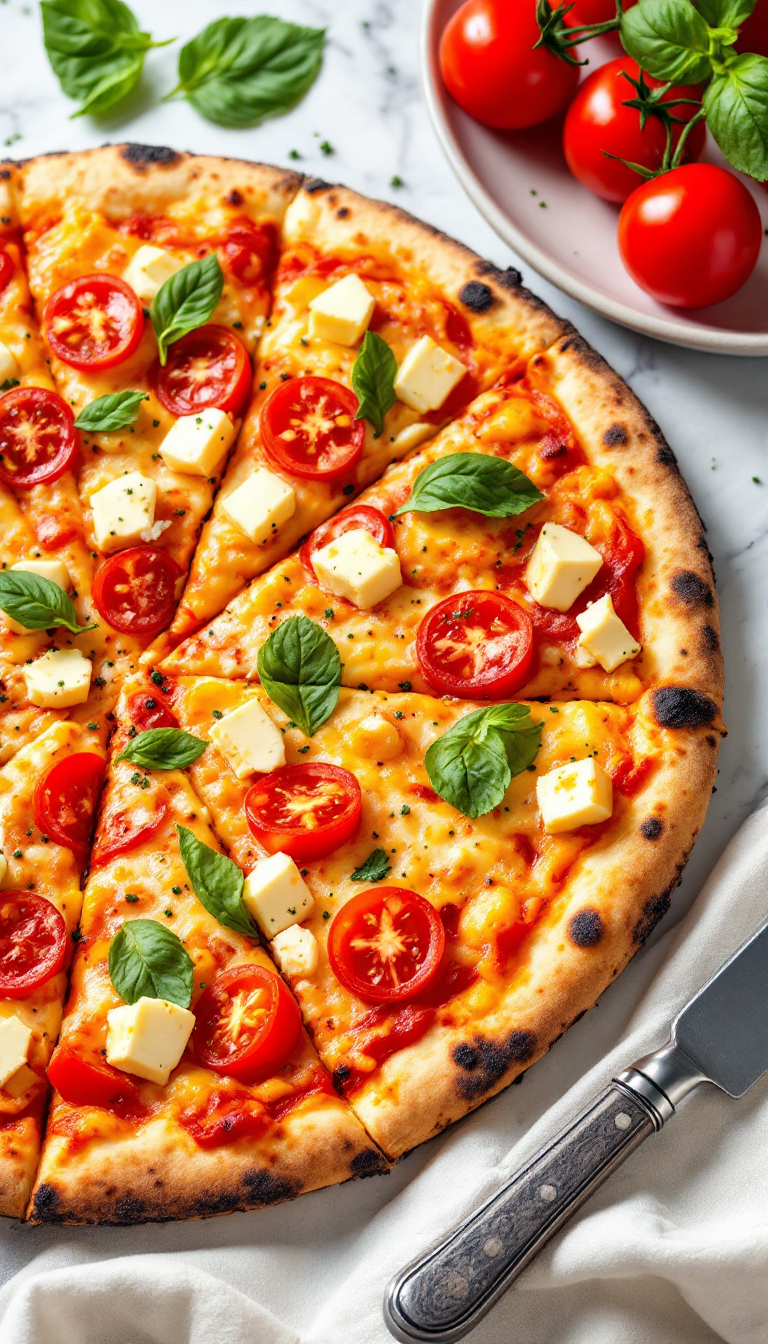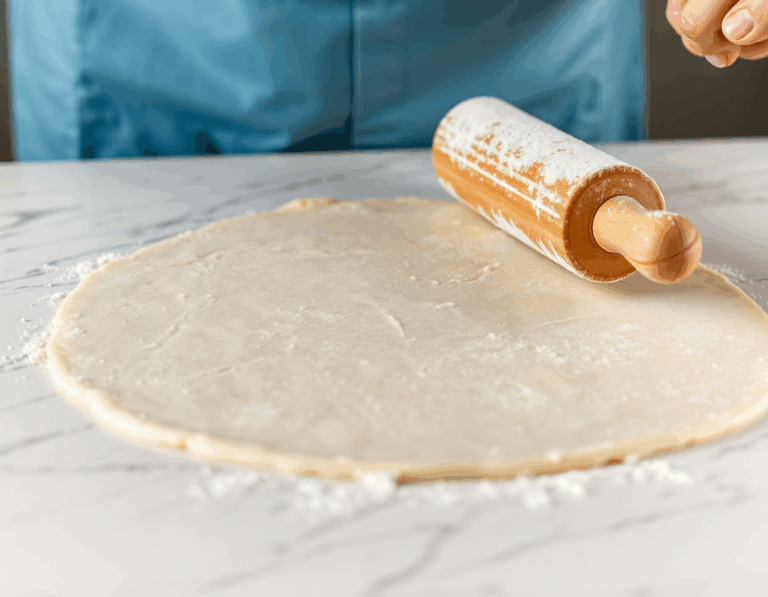
Ah, pizza—it’s like a universal love language, isn’t it? But let’s be real: not all pizzas are created equal.
Sometimes you crave that heavenly slice without the guilt trip that follows. Picture this: a homemade crust, crisped to perfection, topped with the freshest ingredients straight from your local farmer’s market.
It’s like a canvas where you, the artist, can paint with flavors. Oh, and did I mention that the aroma alone is worth a million bucks?
Steps
- Preheat your oven to 400 degrees Fahrenheit. In a bowl, combine Greek yogurt or cottage cheese with self-rising flour, mixing initially with a spoon, and then forming a dough ball with your hands. If the dough is too sticky, lightly flour your hands as needed.
- Roll out the dough on parchment paper using a floured rolling pin to create a thin crust. You can also use a non-breakable, floured cylinder, like a plastic cup, to roll it out. Ensure the dough is rolled out directly on the parchment paper to prevent sticking.
- Spread a layer of pizza sauce evenly over the rolled-out dough, covering it entirely. You can use store-bought or homemade pizza sauce as per your preference.
- Begin adding toppings by first sprinkling shredded chicken over the sauce. Follow with mozzarella cheese, and then add your choice of veggies and turkey pepperoni slices.
- Bake the assembled pizza in your preheated oven for 20 to 25 minutes until the cheese is bubbly and the crust achieves a golden hue. Adjust the baking time based on the amount of sauce and toppings used.

Ingredients
- 1 cup plain Greek yogurt or cottage cheese
- 1 cup self-rising flour
- 1.5 cups shredded chicken breast (rotisserie chicken recommended for convenience)
- 1/2 to 3/4 cup pizza sauce
- 1 cup mozzarella cheese
- 1/4 bell pepper, sliced
- 1/4 red onion, sliced
- 10-12 slices turkey pepperoni
FAQ
- How should I store the leftover high protein pizza?
- Store any leftover pizza in a sealed container in the refrigerator for up to four days or freeze it for as long as two months. To reheat, either use the microwave in 15-20 second bursts or an air fryer at 350 degrees Fahrenheit for 3-4 minutes.
- Which is better for the dough: Greek yogurt or cottage cheese?
- Both Greek yogurt and cottage cheese are excellent choices for the dough and will result in a high-protein crust. Cottage cheese may make the dough a bit saltier with a hint of cheesy flavor, but the curds will disappear when baked, leaving a similar texture to Greek yogurt dough.
- Can I use gluten-free self-rising flour for this recipe?
- Yes, you can substitute with gluten-free self-rising flour. Be aware that the texture and final outcome might differ slightly from when using regular flour.
- What are some variations for this high protein pizza?
- You can try making a high protein BBQ chicken pizza by replacing the tomato sauce with barbecue sauce and adding shredded chicken and cheddar cheese. Alternatively, a Greek-inspired pizza with artichoke hearts, spinach, kalamata olives, and feta cheese is another option. You could also make mini pizzas by dividing the dough into four portions for personal-sized pizzas.
- What can I use instead of shredded chicken as a topping?
- Instead of shredded chicken, you can opt for ground chicken, ground turkey, or even plant-based meat alternatives for a different protein source and flavor profile.
Tips
- Choose Your Base Wisely: When making the dough, opt for either plain Greek yogurt or cottage cheese. Both options provide a similar high-protein crust, but cottage cheese will offer a slightly saltier dough with a mild cheesy flavor.
- Work with Sticky Dough: The dough might get sticky when forming it. If this happens, rinse your hands and lightly dust them with flour before continuing to work with it.
- Customize Your Toppings: Feel free to add your favorite toppings to make the pizza your own. Whether it’s extra veggies, different cheeses, or alternative proteins like ground turkey or plant-based crumbles, the choices are endless.
- Monitor Baking Time Based on Toppings: Keep an eye on the baking time as it can vary depending on the amount of sauce and toppings you use. Less sauce and toppings may result in a shorter baking time, while more could extend it slightly.
Equipment
- Parchment Paper – Useful for rolling out the dough and baking the pizza to prevent sticking.
- Silicone Baking Mat or Pizza Stone – For rolling out the dough and baking the pizza.
- Rolling Pin – To roll out the dough into a thin crust.
